|
In May and early June 2024 we cruised the Baltic Sea from Amsterdam to Amsterdam on
Holland America Lines - Zuiderdam. Great time - Great Cities - Learned a Lot of History.
We started off in Amsterdam where we toured the Van Gogh Museum. It was interesting, lots of his paintings plus paintings from others also. It was kind of disjointed and following the suggested route didn't line up with the audio tour. We were there on a Friday (before high tourist season) and the place was packed. This is real money maker for the Van Gogh Foundation.
 The Zuiderdam
The Zuiderdam
|
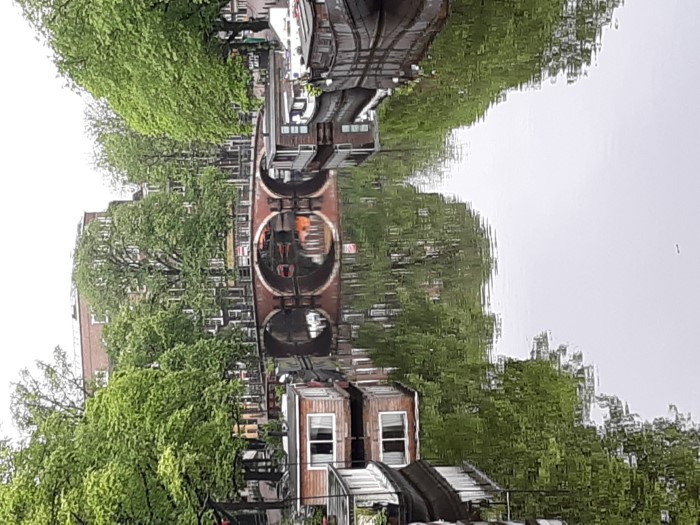 Amsterdam canals really do look like this.
Amsterdam canals really do look like this.
|
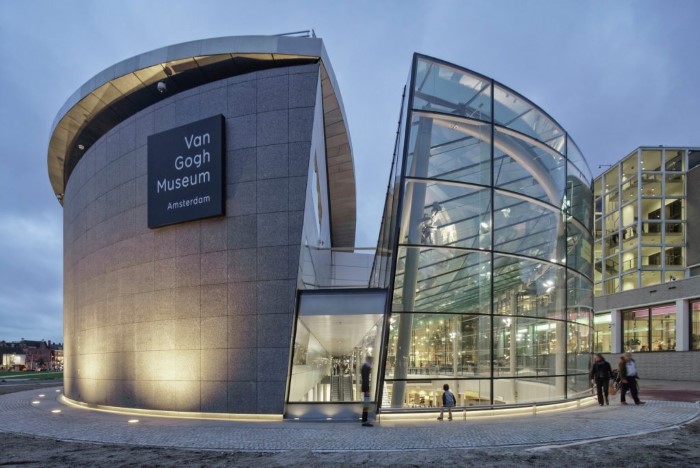 Van Gogh Museum Amsterdam
Van Gogh Museum Amsterdam
|
The first top on the cruise was Kristiansand Norway, which is a medium sized city in the South. Norway is clean, modern and prosperous. They have certainly reinvested their oil revenues in a smart fashion. The old city burned down years ago and the city wall was razed and wide streets were created in it's stead. Nice Place but not for old world charm.
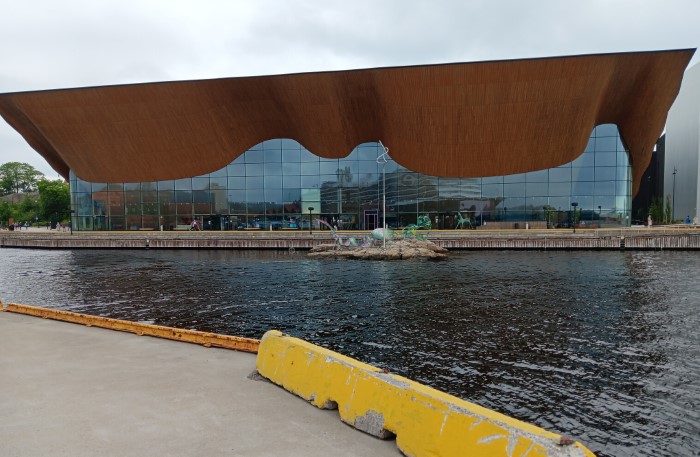 Concert Hall in Kristiansand
Concert Hall in Kristiansand
|
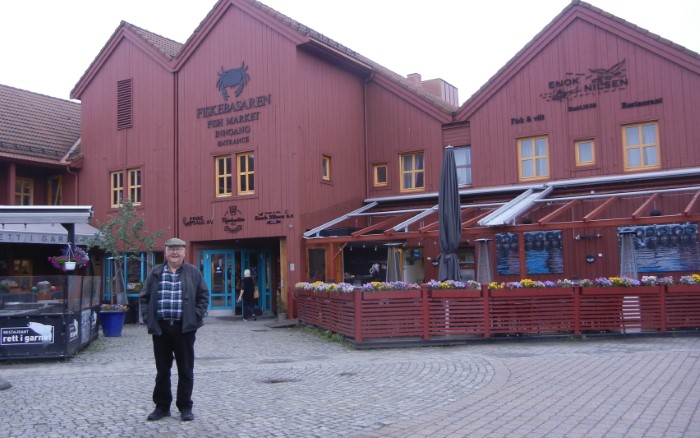 Howard in front of the Fish Market
Howard in front of the Fish Market
|
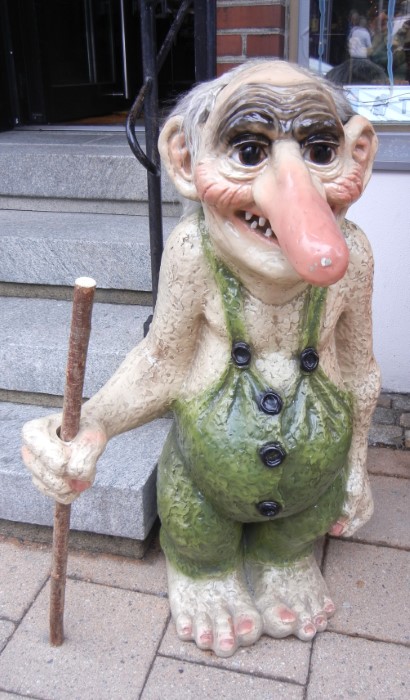 Lots of Gnomes in Norway
Lots of Gnomes in Norway
|
Next stop was Arrhus Denmark. Booming city... the second largest city in Denmark. it is described as the largest container port in Denmark.. which it may have been but there were no ships loading or unloading. Interesting old city, vibrant city center, modern trams, lots of traffic. I don't know why the cruise ship stopped here.
 Welcome sign in Cruise Port
Welcome sign in Cruise Port
|
 The very modern Library
The very modern Library
|
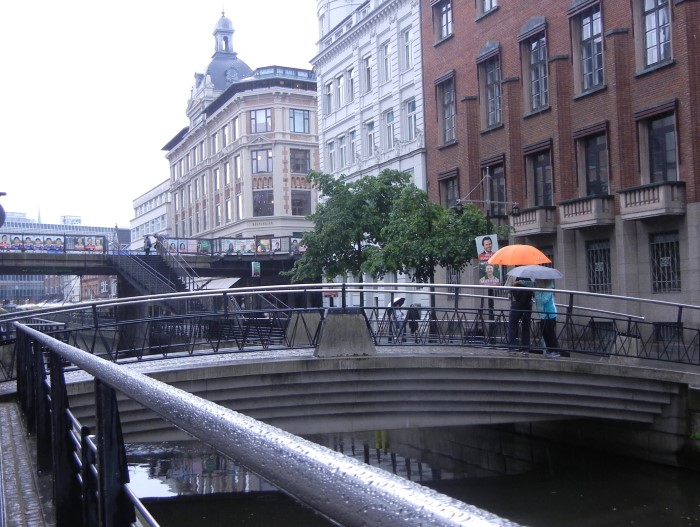 Bridge over river in City Center
Bridge over river in City Center
|
The third stop was Warnemunde Germany which is the closest seaport to Berlin. We were met their by our friend Edith Freiser, from Berlin, who took us to Lubeck. Lubeck was the primary city of the Hanseatic League which was an orgnization of cities and guilds that controlled trade over much of Northern Europe during the middle ages (1356 to 1862) and which transcended kingdoms and empires. The Hansa cities also included Hamburg, Cologne, Amsterdam and others and which had major trading settlements in London, Bruges, Bergen, Tallinn and Novgorod. Much of the wealth and cities in the Baltic region were developed from the Hanseatic League. It was very interesting to see the Hanseatic Museum in Lubeck and see remainders of the wealth that was created so long ago.
 Lubeck - Main City Gate from Hansa Era
Lubeck - Main City Gate from Hansa Era
|
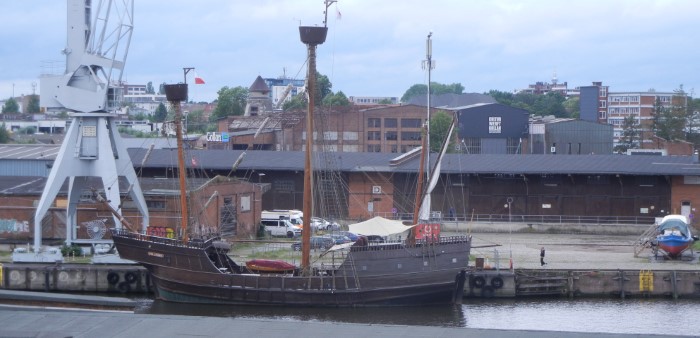 Reproduction of ship of the Hansa Era
Reproduction of ship of the Hansa Era
|
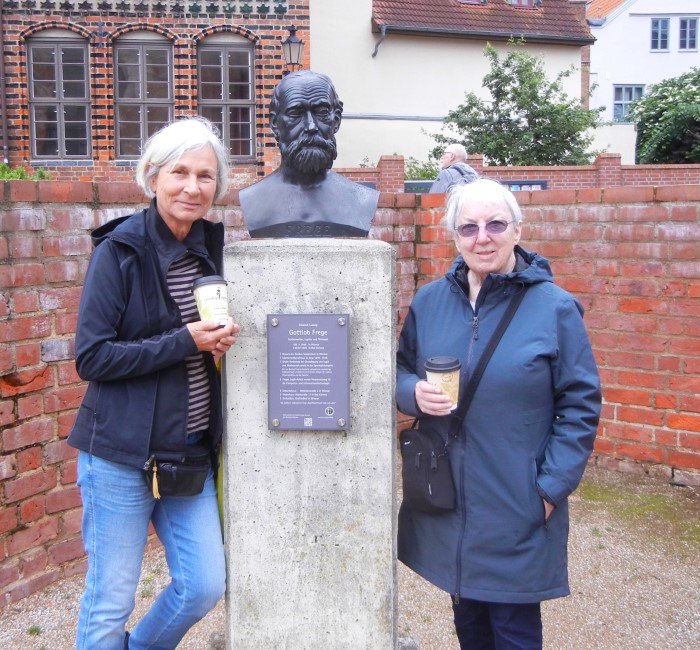 Edith, Bonnie and a statue in Lubeck
Edith, Bonnie and a statue in Lubeck
|
The next stop was Tallinn Estonia...which is a city with a long and troubled past. Estonia is located next to Russia and on German (Hanseatic) trade routes. It has essentially been part of either Russia or Germany forever and until 1991. The Feudal system lasted as long here as anywhere. The nobility were German for hundreds of years and were German speakers. The peasants (serfs or slaves) Estonian local. They spoke Estonian (which is similar to Hungarian and Finnish). It didn't achieve its independence until the fall of the Soviet Union. It is now a NATO member and is only 50 miles from Russia's second largest city...St. Petersburg. This is an old city, with a huge medieval wall and old city. The new parts of the city are modern after many wars. Very interesting place. the population who over the years has been forced to learn German or Russian are now learning English.
 Old Town Tallinn
Old Town Tallinn
|
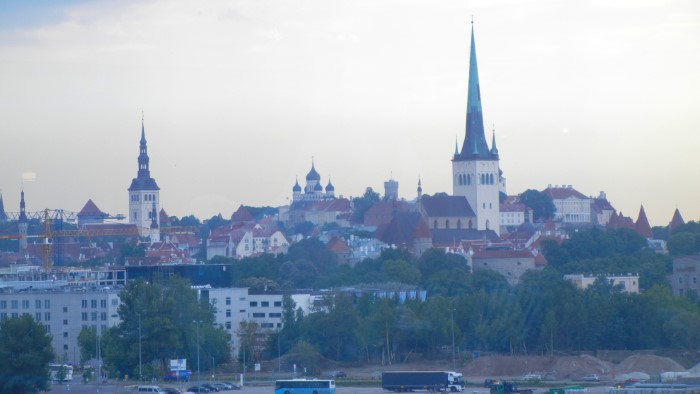 Old Town Tallinn from a Distance
Old Town Tallinn from a Distance
|
 Busy Cruise Port in Tallinn
Busy Cruise Port in Tallinn
|
Helsinki was next.... a modern, sterile, very prosperous thoroughly European City. Like Estonia it is sandwiched between two historically powerful nations... Sweden and Russia. War after war.. caught in the middle. Historically, Finland was part of Sweden until 1917. Similar to Estonia the nobility were Swedish who spoke Swedish and the peasants were Finnish. Currently Finnish and Swedish are the two national languages... But most everyone speaks English.
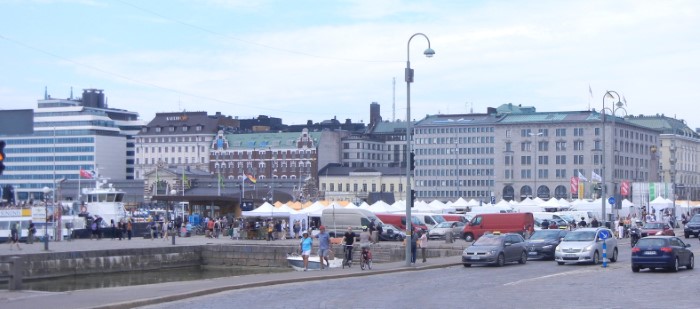 Market Square with Government Palaces and Embassies.
Market Square with Government Palaces and Embassies.
|
 Do you think they have Ice Breakers in Helskinki -- How About 5
Do you think they have Ice Breakers in Helskinki -- How About 5
|
 1935 Auburn 851 Boat Tail on display at Market Square
1935 Auburn 851 Boat Tail on display at Market Square
|
Stockholm was our favorite big city... Modern yet historical. A great waterfront, which stretches forever, can only be appreciated from a boat tour. The old city including the Royal Palace is on an island, yet very close to the new city and new government. Security is present everywhere with the officers well armed. Yet it seemed a very safe place. There is a great looking amusement park called Grona Lund which has some really jaw dropping rides. There is a huge zoo and lots of museums, all within an easy walk, ferry, or tram ride.
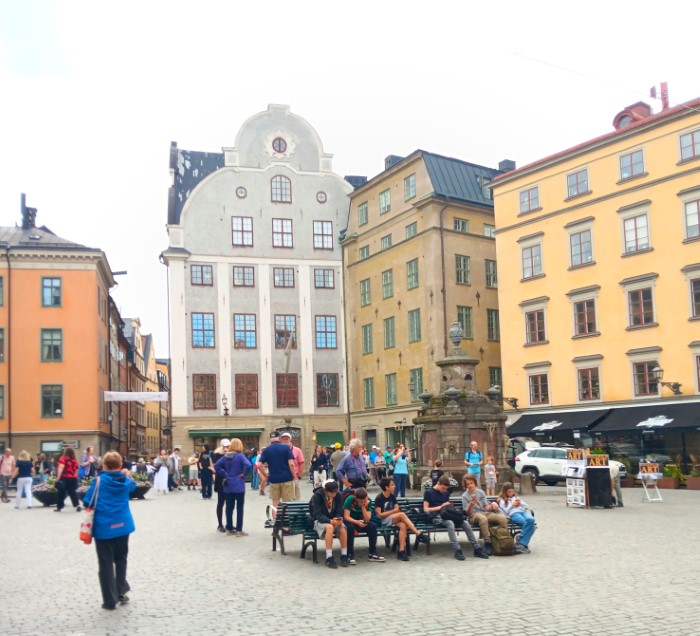 The Old Walled City was on it's own island.
The Old Walled City was on it's own island.
|
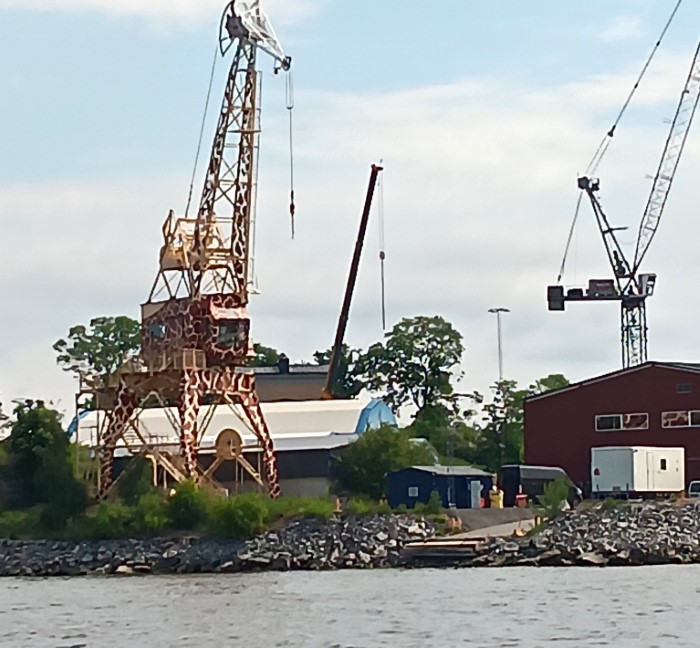 Is this a shipyard crane or a giraffe?
Is this a shipyard crane or a giraffe?
|
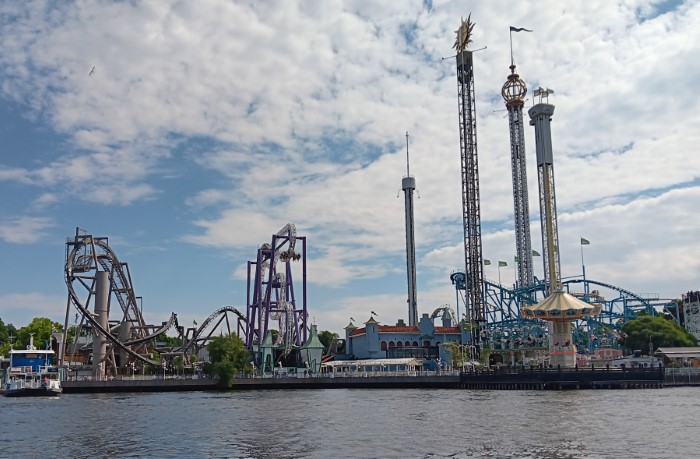 This large amusement park had some really cool looking rides.
This large amusement park had some really cool looking rides.
|
Visby on the island of Gotland (Sweden) is one of two very strategic islands that we visited. Approaching, the island you become aware of Swedish Naval presence with several warships based here and which patrol the waters between Gotland and Latvia. Supposedly there are hundreds of pirate bulk petroleum ships anchored east of Gotland. These are ships of dubious quality and registration which are used to move embargoed Russian petroleum to mostly third-world countries. Many are leaking. They are outside of Swedish territorial waters but within the Swedish economic exclusion zone. Under international law Sweden can only monitor them. These ships are too dangerous to be allowed to sink in the confinded waters of the Baltic.
Visby is a cute small town with a very old and robust city wall, some church ruins, and a very nice botanical garden. This was a major trade center for the Hanseatic League during the middle ages. This must have been a center of religious tolerance and diversity during the Hanseatic years. Besides the main St Mary's Cathedral (Church of Sweden) there are the ruins of at least seven other churches in the old city. This is a place that is worth an additional visit.
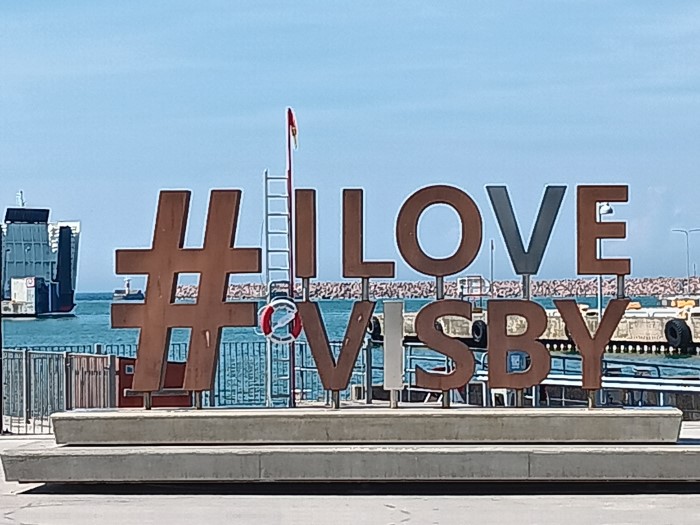 Hashtag - I love Visby
Hashtag - I love Visby
|
 Lots of Church Ruins
Lots of Church Ruins
|
 Gods Terminal - St Peter might be behind door number 1.
Gods Terminal - St Peter might be behind door number 1.
|
Next on the itinerary was Ronne (Island of Bornholm) Denmark. This is another very strategic island. It can control passage of ships from the Baltic Sea (think Russsia) toward any exits into the Atlantic Ocean. Although it is part of Denmark, it is closer to Sweden, Germany and Poland. It is so strategic to Russia that in April 1945 it was bombed for two days by the Red Air Force and then on the third day two Red Army airborne divisions parachuted onto the Island to capture it from the Germans. This was just before the end of the War. Russia claimed it as Soviet territory. At the Potsdam Conference after Germany surrendered the western allies (US, UK and France) said no. This was soverign Danish territory. The Potsdam agreement gave the island back to Denmark. Denmark became an original member of NATO and the Soviet Union was allowed to incorporate Latvia, Lithuania and Estonia.
One of the main industries in Ronne is the building of wind generating towers that are placed all over western baltic. I called this a Wind Farm Nursery. There were many under construction next to where the cruise ship was moored.
 The Old Ronne Lighthouse
The Old Ronne Lighthouse
|
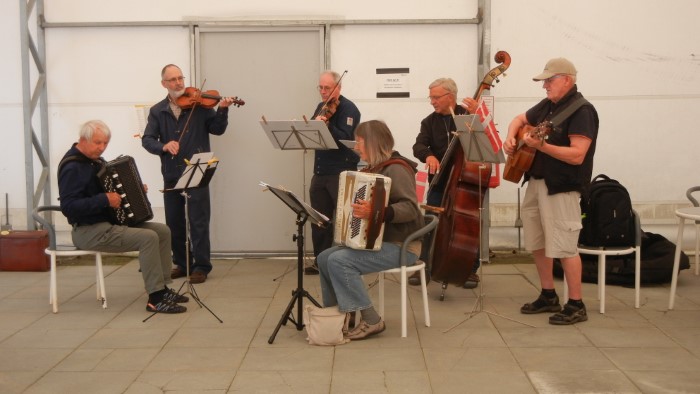 Welcoming Arriving Cruise Passengers
Welcoming Arriving Cruise Passengers
|
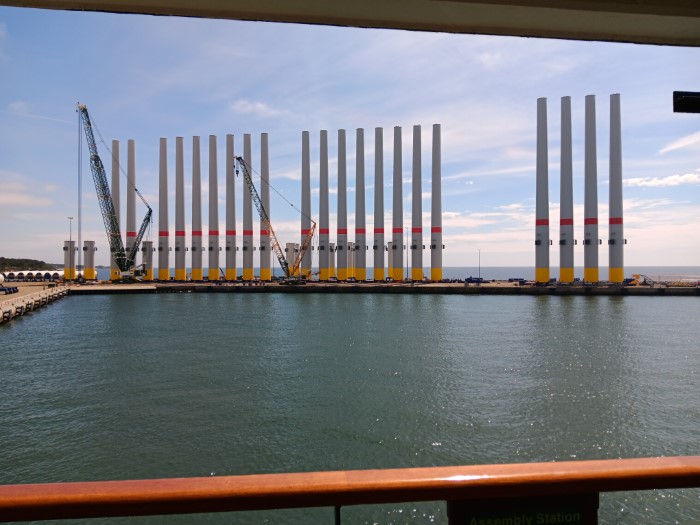 Wind Farm Nursery
Wind Farm Nursery
|
After Ronne we returned to Germany to visit Kiel. This has been a major shipping and naval center. Many of the German U-Boats were built here during the second world war and there the German Naval Shipyard is located here. Because of its huge naval presence and its closeness to England the city was heavily bombed during World War II. Most of the buildings in the "old city" are new since 1945. Like Helsinki it is a reasonably charmless large, modern European city. Nearby is the Kiel Canal which is a shortcut for ships from the Baltic to North Seas. This is the busiest (in terms of tonnage of shipping) man-made waterway in the world. It was built in the 1880s.
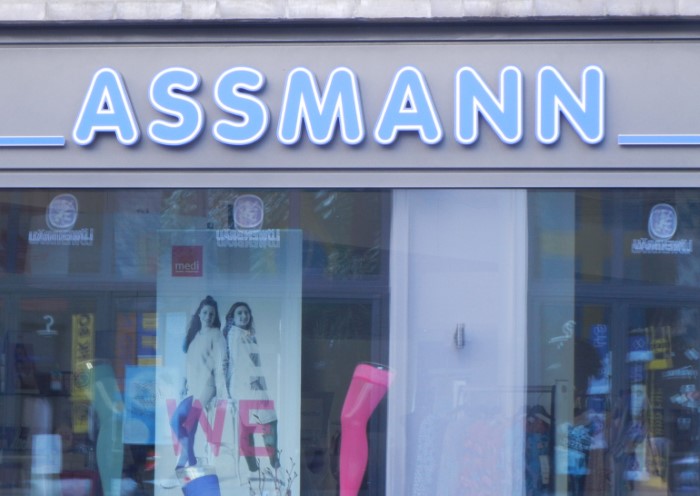 The Assmann store - Remember Kramer's License Plate.
The Assmann store - Remember Kramer's License Plate.
|
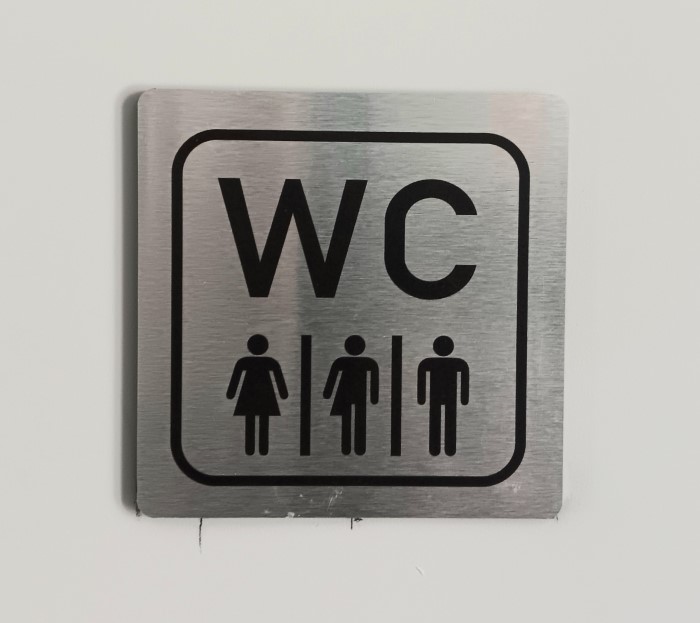 This public restroom swings 3 ways
This public restroom swings 3 ways
|
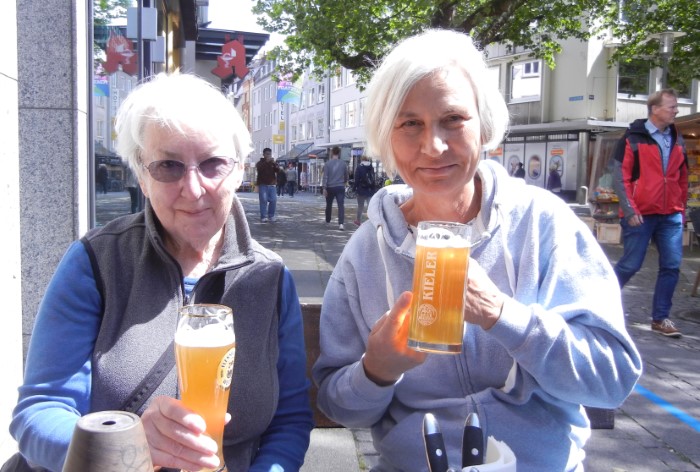 .
Bonnie and Edith enjoying Germany's Finest. Edith
wasn't on the cruise, but she kept showing up.
.
Bonnie and Edith enjoying Germany's Finest. Edith
wasn't on the cruise, but she kept showing up.
|
Our last Baltic port of call on the cruise was of course Copenhagen... the beautiful queen of the sea and the home to Tivoli, Hamlet and Lego. It is indeed a beautiful city with lots of historic interest. We visited the Little Mermaid, I had my picture taken with Hans Christian Anderson, we photographed the oft-photographed painted buildings in the Nyhaven neighborhood, and took a canal boat tour of the many waterways. Very interesting place.
 The Little Mermaid
The Little Mermaid
|
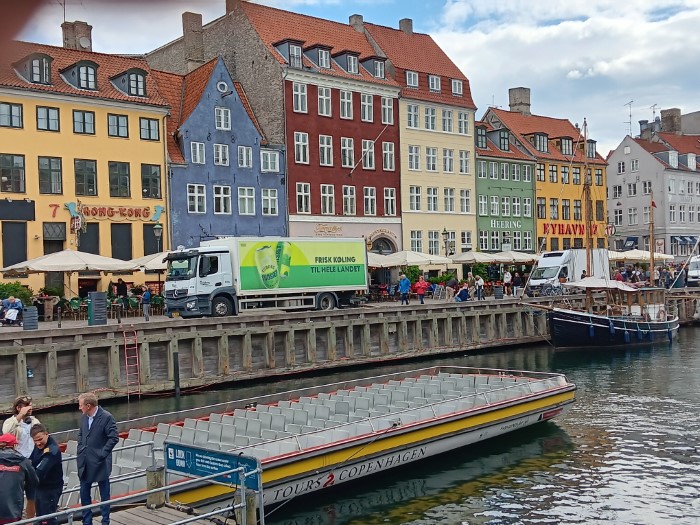 Nyhaven neighborhood
Nyhaven neighborhood
|
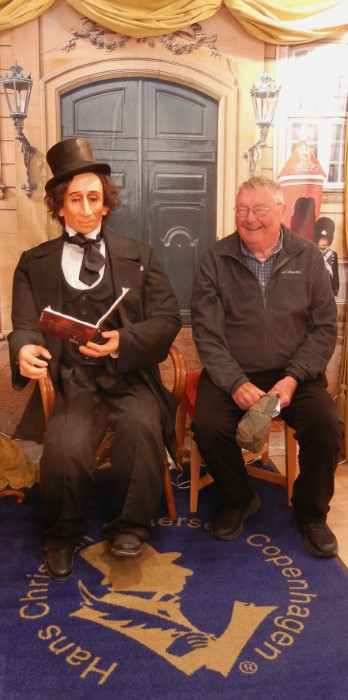 Howard with Hans Christian Anderson
Howard with Hans Christian Anderson
|
From Copenhagen the ship returned to Amsterdam and we flew back to Seattle.
|
 The Zuiderdam
The Zuiderdam
 Amsterdam canals really do look like this.
Amsterdam canals really do look like this.
 Van Gogh Museum Amsterdam
Van Gogh Museum Amsterdam
 Concert Hall in Kristiansand
Concert Hall in Kristiansand
 Howard in front of the Fish Market
Howard in front of the Fish Market
 Lots of Gnomes in Norway
Lots of Gnomes in Norway
 The very modern Library
The very modern Library
 Bridge over river in City Center
Bridge over river in City Center
 The Old Walled City was on it's own island.
The Old Walled City was on it's own island.
 Is this a shipyard crane or a giraffe?
Is this a shipyard crane or a giraffe?
 This large amusement park had some really cool looking rides.
This large amusement park had some really cool looking rides.
 Hashtag - I love Visby
Hashtag - I love Visby
 Gods Terminal - St Peter might be behind door number 1.
Gods Terminal - St Peter might be behind door number 1.
 Welcoming Arriving Cruise Passengers
Welcoming Arriving Cruise Passengers
 Wind Farm Nursery
Wind Farm Nursery
 This public restroom swings 3 ways
This public restroom swings 3 ways
 The Little Mermaid
The Little Mermaid
 Nyhaven neighborhood
Nyhaven neighborhood